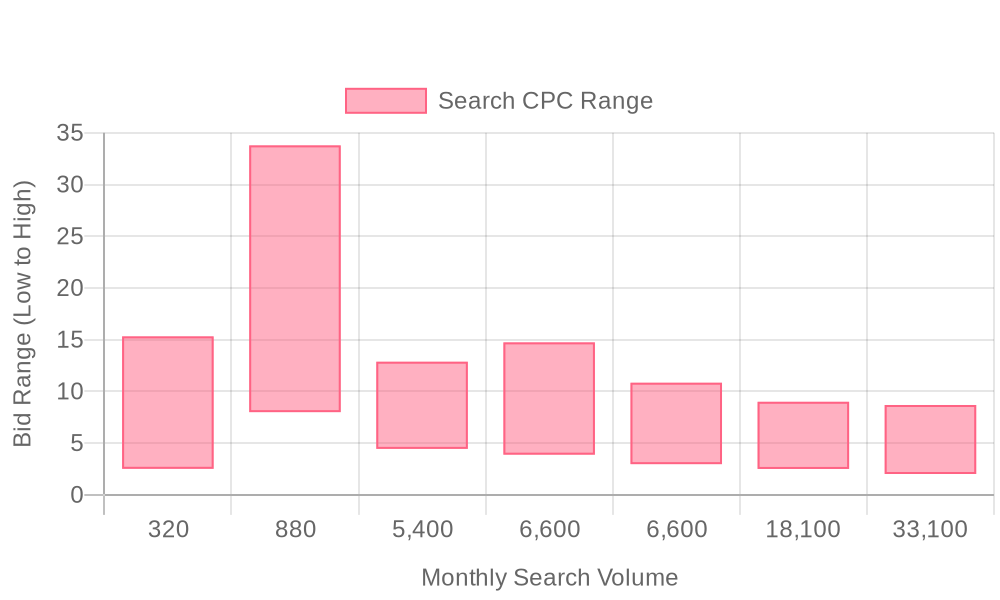
Supercharge your lead generation with a FREE Google Ads audit - no strings attached! See how you can generate more and higher quality leads
Get My Free Google Ads AuditFree consultation

No commitment
Supercharge your lead generation with a FREE LinkedIn Ads audit - no strings attached! See how you can generate more and higher quality leads
Get My Free Google Ads AuditFree consultation

No commitment
Supercharge your lead generation with a FREE Meta Ads audit - no strings attached! See how you can generate more and higher quality leads
Get My Free Google Ads AuditGet My Free LinkedIn Ads AuditGet My Free Meta Ads AuditFree consultation

No commitment
Supercharge your lead generation with a FREE Google Ads audit - no strings attached! See how you can generate more and higher quality leads
Get My Free Google Ads AuditFree consultation

No commitment
In today's digital landscape, Google Ads offers a strategic avenue for marketing medical records services, capturing high-intent audiences precisely when they search for healthcare solutions. This comprehensive guide aims to equip healthcare marketers with actionable strategies to leverage Google Ads effectively, addressing common issues such as missing high-value prospects and optimizing engagement times. By ensuring compliance with industry regulations and integrating with your marketing strategy, you can revolutionize your approach to medical records marketing.

Healthcare organizations seeking to acquire high-value medical records leads must operate with precision and agility. A data-driven Google Ads strategy helps pinpoint actionable demand from decision-makers at clinics, hospitals, and medical service providers while minimizing wasted spend and missed opportunities. For a deeper dive on Google Ads requirements and compliance challenges in the healthcare sector, review this Google Ads and HIPAA compliance overview.
Integrating Google Ads into your healthcare marketing mix allows you to reach prospects at moments of active search, capturing engagement before competitors or alternative solutions. When campaign data is unified with sales and CRM systems, revenue teams gain unprecedented clarity on which sources and messages are driving conversions, refining budget allocation and supporting continuous growth. For more on connecting ad platform data with analytics, see our step-by-step guidance.
Ready to unify your ad, CRM, and sales data for smarter healthcare lead generation? Get started for free with Sona.

Healthcare decision-makers often search online for specialized medical records solutions, making digital ad channels an essential part of a modern go-to-market playbook. Capturing these high-intent searches is vital in a sector where prospects may be researching in stealth mode, and every qualified lead represents a significant revenue opportunity. For actionable tips on maximizing ROI from digital campaigns, explore our playbooks.
Medical records providers face unique challenges: niche offerings, complex buyer journeys, and a need for tailored outreach. Precision targeting in Google Ads allows healthcare marketers to engage segmented audiences based on real-time audience intent, rather than relying on generic campaigns that dilute messaging and waste budget. For an overview of Google Ads healthcare advertising policies and compliance guidelines, see this compliance resource.
Optimizing for higher-margin services is possible when marketing teams can instantly identify and prioritize the most urgent inquiries. Rapid follow-up, powered by visitor identification and in-market behavior analysis, ensures no opportunity is lost to a competitor or left to grow cold.
Geographic targeting in Google Ads enables providers to reach underserved or newly regulated regions, driving visibility where competitors may be absent. By tracking offline events and connecting every interaction—from initial click to signed contract—revenue teams can attribute ROI accurately and justify spend on channels that move the needle. Learn more about measuring offline attribution to strengthen your reporting.
Integrating first-party and third-party data sources means marketers no longer operate in silos. Every engagement, whether digital or offline, becomes a measurable touchpoint, and campaign analytics reflect the full patient or client lifecycle. This data-driven approach powers continuous optimization, ensuring that marketing investment delivers maximum value across the entire healthcare marketing funnel. Ready to see how unified data can transform your results? Get started for free with Sona.

To see how seamless campaign management and audience targeting can drive better results for healthcare marketers, get started for free with Sona.

Identifying growth opportunities in the medical records and healthcare technology space requires a precise blend of data-driven research and tactical execution. Revenue teams that invest in vertical-specific analysis consistently outperform those relying on generic strategies, as they are able to uncover nuanced, high-potential segments that competitors often overlook. By leveraging comprehensive keyword and competitor gap analysis, organizations can systematically prioritize efforts toward the most valuable opportunities, ensuring resources are allocated for maximum impact.
Exploring industry-specific placements is crucial for medical records providers and healthcare marketers aiming to reach the right decision-makers. Investing in targeted placements extends campaign reach beyond standard channels and connects your solution with audiences who are already engaging with related healthcare content. Content retargeting further expands influence by re-engaging both known and anonymous visitors, closing the loop between first touch and eventual conversion. Advanced platforms now make it possible to identify companies and individuals behind those sessions, which allows for far more accurate targeting and follow-up.
Accounting for offline conversions is often a missing link in healthcare digital marketing. Unifying online and offline data ensures that every meaningful interaction, such as a phone inquiry or an in-person demo, is captured and attributed back to the original source. Real-time intent signals can instantly flag when certain accounts move into buying mode, enabling teams to shift budget and messaging to capitalize on active opportunities. As leads progress through the funnel, dynamic audience updates keep every campaign relevant, while integrated CRM and ad platform syncs allow for seamless nurture and retargeting across channels.
Continuous keyword refreshment is essential in the evolving healthcare landscape. By aligning updated keyword data with content marketing initiatives, medical records and service providers can stay ahead of shifts in search behavior and regulatory trends. This approach closes gaps between website engagement, sales outreach, and final conversion, driving measurable improvements in demand generation and pipeline velocity. For organizations managing Google Ads for healthcare providers or Google Ads for medical records, this unified approach to data and strategy is foundational for long-term growth. Ready to capture new opportunities and accelerate your pipeline? Get started for free with Sona.

Effective audience segmentation is foundational for healthcare marketers seeking to drive performance in medical records advertising. By structuring campaigns around clearly defined segments, organizations can ensure each message reaches decision-makers with the highest relevance and impact, supporting both compliance and engagement goals. For deeper strategic insight, explore this in-depth guide to account identification.
By combining granular segmentation, real-time intent signals, and CRM-ad sync, healthcare organizations can execute compliant, high-performing medical advertising strategies. This empowers B2B revenue teams to reach the right healthcare decision-makers at scale, measure full-funnel impact, and continually improve campaign management for medical records solutions. To see how these strategies come together in a single platform, get started for free with Sona and unlock advanced audience segmentation for medical advertising.

| Industry | Keyword | Monthly Search Volume | Competition Level | Low Bid | High Bid |
| Medical Records | athena emr system | 320 | LOW | 2.52 | 15.32 |
| Medical Records | free emr | 880 | MEDIUM | 8 | 33.78 |
| Medical Records | electronic health records | 5400 | LOW | 4.45 | 12.87 |
| Medical Records | electronic medical records | 6600 | LOW | 3.89 | 14.74 |
| Medical Records | epic emr system | 6600 | LOW | 2.97 | 10.84 |
| Medical Records | medical records | 18100 | LOW | 2.51 | 9 |
| Medical Records | emr system | 33100 | MEDIUM | 2.02 | 8.69 |
Precision in keyword strategy is essential for healthcare organizations aiming to capture qualified leads searching for Google Ads for Medical Records, healthcare digital marketing, and medical advertising compliance. Focusing on targeted search terms ensures marketing efforts attract decision-makers responsible for compliance, privacy, and records management, rather than wasting spend on low-intent queries. This approach prevents high-value prospect attrition and increases the relevance of every ad impression by surfacing website visitor identification and intent data.
The most effective campaigns leverage a blend of high-intent, compliance-driven, and service-specific keywords. For example, incorporating terms like "Google Ads healthcare providers," "Google Ads for doctors," "Google Ads targeting for medical services," and "medical practice advertising" addresses a spectrum of search behaviors, from executives seeking compliant ad solutions to practitioners exploring digital outreach. Marketers benefit from staying updated on Google Ads healthcare policy compliance to ensure campaigns remain effective and compliant as regulations evolve.
As search intent fluctuates and regulatory requirements intensify, marketers benefit from platforms that identify website visitors beyond anonymous clicks and update audience segments in real time. When CRM and ad data are unified, high-value healthcare prospects can be nurtured with tailored messaging, while attribution models accurately reflect campaign impact from click to closure. To see how these strategies work in practice, get started for free with Sona.
Effective Google Ads for Medical Records campaigns rely on precision in keyword targeting to attract relevant inquiries and avoid wasted spend. Start with research-driven core keywords, then layer on intent modifiers such as “HIPAA compliant,” “secure EMR,” or “medical records software” to reach buyers actively seeking solutions. Incorporate negative keywords to filter out irrelevant traffic, such as “free,” “template,” or “jobs,” ensuring the budget is focused only on high-value prospects. For a comprehensive overview of Google Ads healthcare advertising policies and compliance guidelines, refer to Google Ads healthcare compliance.
Marketers gain a significant advantage by identifying not just anonymous clicks but the organizations and decision-makers behind each search. Using Sona identification, it becomes possible to prioritize spend on accounts with high intent, shifting resources dynamically as new buying signals emerge. This data-driven targeting approach enables medical records vendors to consistently engage the right stakeholders at the right stage of the funnel.
Ad copy is most effective when it directly addresses industry-specific pain points—like delays in patient data access, privacy concerns, or regulatory headaches. Use clear, concise language that highlights solutions such as “instant access to compliant records” or “trusted by healthcare providers nationwide.” Incorporate trust signals, including certifications, case studies, and HIPAA compliance, to assure cautious buyers in a heavily regulated field. Explore actionable copywriting strategies in our marketing playbooks.
Leverage real-time audience data to tailor messaging by segment and intent. As in-market prospects move closer to a decision, update ad language to reflect their journey: from awareness (“Discover secure EMR solutions”) to conversion (“Book a demo for HIPAA-compliant records management”). Continuous audience enrichment ensures ad relevance and maximizes engagement among diverse healthcare decision-makers.
A cohesive user journey starts with landing pages that mirror ad group themes and speak directly to medical organizations’ concerns. Each landing page should feature a prominent, relevant call-to-action—such as scheduling a consultation or accessing a compliance checklist—and display visible trust badges, testimonials, and security credentials. Messaging should reflect the searcher’s original query, reinforcing relevance and building confidence. For a summary of Google’s policies for healthcare and medicine ads, see Google’s healthcare advertising policies.
Dynamic audience insights allow for tailored landing page experiences that match the visitor’s stage in the buying cycle, job role, or organizational type. By integrating CRM and ad data, healthcare marketers can personalize content for returning visitors, accelerate pipeline velocity, and drive higher conversion rates. Every touchpoint is tracked and refined according to measurable outcomes, not guesswork. To see the impact of personalized journeys, get started for free with Sona.
Continuous optimization is essential for high-performing Google Ads for Medical Records campaigns. Deploy structured A/B tests on ad copy, landing pages, and audience segments to surface the highest-converting combinations. Offline conversion tracking connects marketing activity to closed deals—measuring true ROI from initial click through to signed contract and patient onboarding. For more on HIPAA compliance and Google Ads, visit HIPAA compliance and Google Ads.
By syncing enriched leads and conversion data with Google Ads and CRM platforms using Sona destinations, revenue teams close attribution gaps and rapidly iterate on what works. Real-time feedback loops empower marketers to move budget toward campaigns driving qualified pipeline and away from underperforming segments. With granular attribution, every opportunity is fully realized and supported by actionable insights.
Healthcare organizations seeking to grow their presence in the medical records space benefit from a multi-layered approach that blends strategic campaign management with data-driven personalization. A unified view of engagement across touchpoints drives more informed decisions, allowing teams to allocate resources where they deliver the highest impact. To achieve this, leveraging dynamic audience segmentation can help marketers identify and target high-intent prospects, while staying informed with expert marketing analytics insights.
Effectively leveraging Google Ads for marketing medical services requires a strategic approach that balances compliance with impactful advertising. Throughout this discussion, we've explored how to navigate the complex landscape of digital advertising in the medical field, ensuring that your campaigns are not only compliant with regulations but also optimized for success.
Understanding the unique challenges faced by medical professionals in advertising, such as privacy concerns and regulatory compliance, is crucial. By focusing on targeted messaging, utilizing data-driven insights, and continuously optimizing your campaigns, you can maximize the effectiveness of your Google Ads strategy. These steps enable you to reach the right audience while maintaining the integrity and trust essential in the medical industry.
Embrace the potential for growth and transformation by implementing these strategies. With the right tools and insights, you can elevate your marketing efforts and achieve measurable results. By taking action now, you're positioning yourself and your practice for increased visibility and patient engagement.
To further enhance your marketing capabilities and unify your go-to-market data, we invite you to start for free
Running Google Ads for medical practices involves leveraging a data-driven strategy to target high-intent queries, ensuring compliance with industry regulations, and integrating campaign data with CRM systems for improved engagement and conversions.
Compliance requirements for Google Ads in healthcare include adhering to HIPAA regulations and Google Ads healthcare advertising policies, ensuring that all advertising activities protect patient information and meet legal standards.
Medical services that can be advertised on Google Ads include search campaigns for high-intent queries, display ads for brand presence, video ads for illustrating services, and remarketing campaigns to re-engage visitors.
Optimizing Google Ads for healthcare campaigns involves using targeted keyword lists, crafting compelling ad copy that addresses industry-specific concerns, designing aligned landing pages, and implementing continuous data-driven optimizations.
Best practices for Google Ads in the medical field include precision targeting with relevant keywords, aligning ad and landing page messages, leveraging real-time audience data, integrating CRM with ad platforms, and ensuring compliance with healthcare advertising policies.
Join results-focused teams combining Sona Platform automation with advanced Google Ads strategies to scale lead generation

Connect your existing CRM

Free Account Enrichment

No setup fees
No commitment required

Free consultation

Get a custom Google Ads roadmap for your business
Join results-focused teams combining Sona Platform automation with advanced Meta Ads strategies to scale lead generation

Connect your existing CRM

Free Account Enrichment

No setup fees
No commitment required

Free consultation

Get a custom Google Ads roadmap for your business
Join results-focused teams combining Sona Platform automation with advanced LinkedIn Ads strategies to scale lead generation

Connect your existing CRM

Free Account Enrichment

No setup fees
No commitment required

Free consultation

Get a custom Google Ads roadmap for your business
Join results-focused teams using Sona Platform automation to activate unified sales and marketing data, maximize ROI on marketing investments, and drive measurable growth

Connect your existing CRM

Free Account Enrichment

No setup fees
No commitment required

Free consultation

Get a custom Google Ads roadmap for your business
Over 500+ auto detailing businesses trust our platform to grow their revenue
Join results-focused teams using Sona Platform automation to activate unified sales and marketing data, maximize ROI on marketing investments, and drive measurable growth

Connect your existing CRM

Free Account Enrichment

No setup fees
No commitment required

Free consultation

Get a custom Google Ads roadmap for your business
Over 500+ auto detailing businesses trust our platform to grow their revenue
Join results-focused teams using Sona Platform automation to activate unified sales and marketing data, maximize ROI on marketing investments, and drive measurable growth

Connect your existing CRM

Free Account Enrichment

No setup fees
No commitment required

Free consultation

Get a custom Google Ads roadmap for your business
Over 500+ auto detailing businesses trust our platform to grow their revenue
Our team of experts can implement your Google Ads campaigns, then show you how Sona helps you manage exceptional campaign performance and sales.
Schedule your FREE 15-minute strategy sessionOur team of experts can implement your Meta Ads campaigns, then show you how Sona helps you manage exceptional campaign performance and sales.
Schedule your FREE 15-minute strategy sessionOur team of experts can implement your LinkedIn Ads campaigns, then show you how Sona helps you manage exceptional campaign performance and sales.
Schedule your FREE 15-minute strategy sessionOur team of experts can help improve your demand generation strategy, and can show you how advanced attribution and data activation can help you realize more opportunities and improve sales performance.
Schedule your FREE 30-minute strategy sessionOur team of experts can help improve your demand generation strategy, and can show you how advanced attribution and data activation can help you realize more opportunities and improve sales performance.
Schedule your FREE 30-minute strategy sessionOur team of experts can help improve your demand generation strategy, and can show you how advanced attribution and data activation can help you realize more opportunities and improve sales performance.
Schedule your FREE 30-minute strategy sessionOur team of experts can help improve your demand generation strategy, and can show you how advanced attribution and data activation can help you realize more opportunities and improve sales performance.
Schedule your FREE 30-minute strategy session





Launch campaigns that generate qualified leads in 30 days or less.
